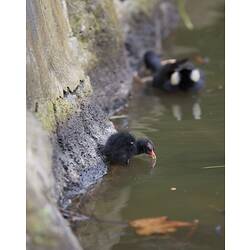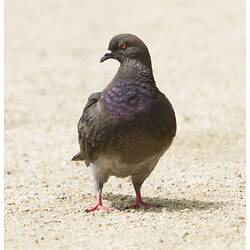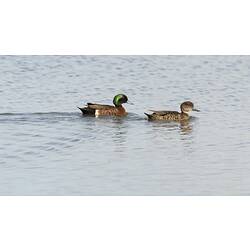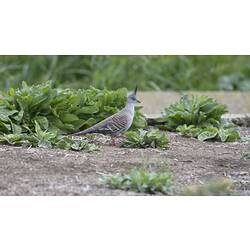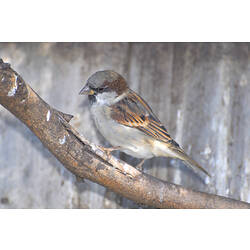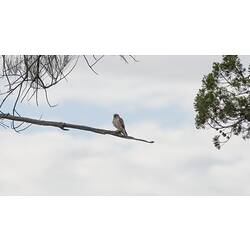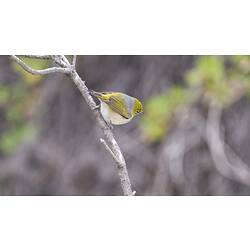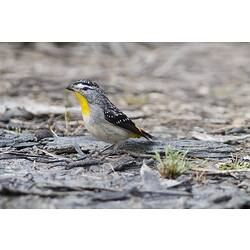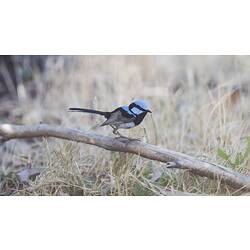Although the Carlton Gardens are centrally located within a large and active city, the grounds provide a haven for many different bird species. Over a three-year period, a single observer recorded in excess of 60 species. These species range from the ubiquitous Silver Gull (Chroicocephalus novaehollandiae) to the cryptic Tawny Frogmouth (Podargus strigoides).
Why do so many bird species occur within the Carlton Gardens?
A quick stroll through the park will identify a wide array of vegetation types. These include open lawns, thick shrubbery, large trees, and ponds. Birds use these areas to feed and shelter. Many of the species, such as the Willie Wagtail (Rhipidura leucophrys) and Australian Magpie (Craticus tibicen), are local residents and are found here on a daily basis. Some simply fly overhead and seldom use the grounds (White Ibis, Threskiornis molucca and Peregrine Falcon Falco peregrinus), while others are migratory and use the microhabitats for stopovers during their movements (Grey Fantail, Rhipidura albiscapa and Silvereye, Zosterops lateralis).
What do they eat?
The park provides a wealth of foods. There are daily insect hatchings and the gulls seen running across the lawns in the early morning are after this live food. In the trees, nectar is commonly taken by honeyeaters and lorikeets, while fruiting figs also provide some sustenance. The ponds have a remarkable invertebrate fauna and provide food for myriads of ducks and the odd cormorant. The occasional bird of prey feeds on many of the smaller birds and some of the crepuscular or nocturnal mammals.
Do birds breed in the gardens?
Breeding records are not only for active nests; birds carrying nesting material, carrying food, and feeding flying young are all indicative of nesting. Young birds are also noisy and attract attention in that manner. There are a number of breeding records noted for the gardens and the variety of habitats provides the security that is required. Taller eucalypts and pines house nests of falcons, honeyeaters and ravens. The shrubbery has nesting potential for a number of the smaller species such as the Common Blackbird (Turdus merula) and the White-plumed Honeyeater (Lichenostomus penicillatus). The islands and papyrus beds are occupied by nesting Pacific Black Ducks (Anas superciliosus) and Dusky Moorhens (Gallinula tenebrosa).
What studies can be done in the gardens?
The behaviour of species in an urban environment indicates how the species can cope with heavy human use. Nesting success can be observed and related to local predation by the local population of both native and introduced bird and mammal predators. Photographing species, especially around the ponds, can be rewarding considering the plumage changes and ages of many of the breeding waterfowl.
Binoculars and cameras are not required but are useful tools. Simply adopt a watch and wait attitude and record observations on paper for later reference.
Further Reading
Aston, H. I. and Balmford, R. A. 1978. A bird atlas of the Melbourne Region. Melbourne.
McCulloch, Ellen. 2000. Birds in your garden. Flemington.
Menkhorst, P., Rogers, D., Clarke, R., Davies, J., Marsack, P. and Franklin, K. 2017. The Australian Bird Guide. CSIRO Publishing.
Morcombe, M. 2006. Field guide to Australian birds. Archerfield.
Museum Victoria. 2006. Melbourne's Wildlife: a field guide to the fauna of Greater Melbourne. Museum Victoria & CSIRO Publishing.
Pizzey, G. and Knight, F. 2007. The field guide to the birds of Australia. Sydney.
Reid, A. J., Shaw, N. J., and Wheeler, W. R. 1971. Birds of Victoria - Urban areas. Melbourne.
Simpson, K. and Day, N. 2010. Field guide to the birds of Australia. Ringwood.
Slater, P., Slater, P. and Slater, R. 2009. The Slater field guide to Australian birds. Frenchs Forest.
More Information
-
Keywords
-
Authors
-
Article types





